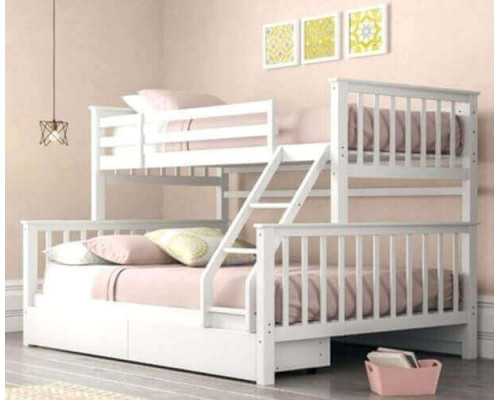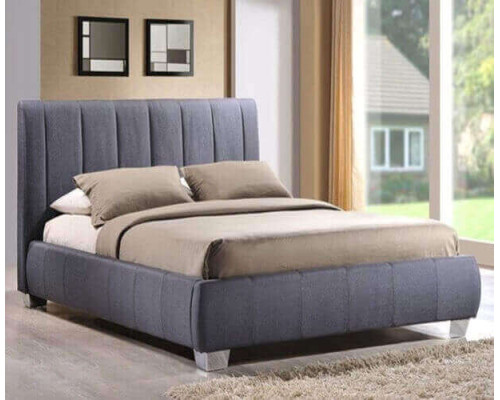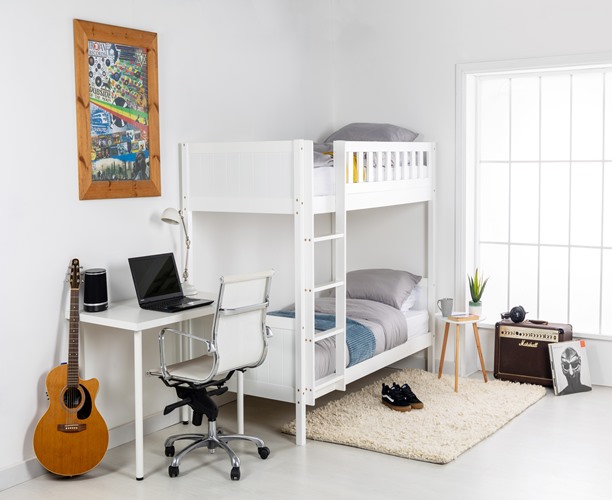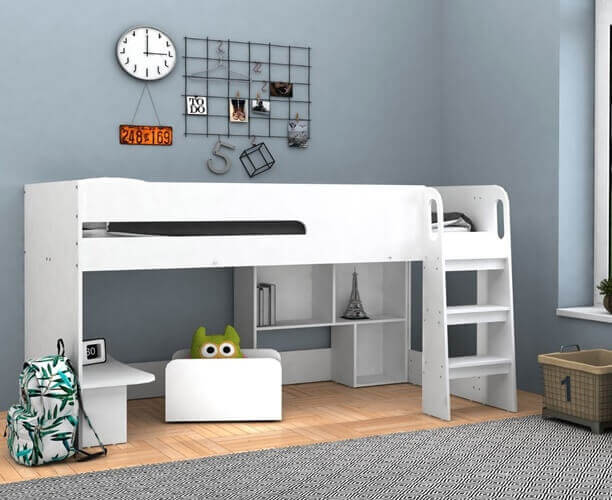What to Look for When Buying a Bed for Your Child

When choosing a bed frame for your child, several factors must be considered to ensure comfort and functionality.
This guide will help you navigate the options, ensuring the perfect choice for your child's needs.
Key Considerations Before Buying a Children's Bed
Age and Growth
Children grow quickly, so it is crucial to select a bed that can accommodate their rapid development.
A small bed may seem appropriate for young toddlers, but a larger one ensures the child can use it for years.
Room Size
Take precise measurements of the room.
A bed that fits well ensures space for play and other furniture.
Bunk and loft beds work well in smaller rooms, maximizing vertical space.
Safety Features
Safety is paramount when purchasing a child's bed.
Look for bed frames with rounded edges, secure frames, and guardrails (especially for bunk beds or beds for younger children).
Ensure the materials used are non-toxic and hypoallergenic.
Types of Children's Beds
Single Beds
Single beds are perfect for older children and fit comfortably in most bedrooms.
They come in various styles, from classic wooden frames to modern metal designs.
Bunk Beds
Bunk beds are designed to stack two beds vertically, making them ideal for shared bedrooms or homes with limited space.
Ensure the top bunk has adequate guardrails and the ladder is sturdy.
Loft Beds
Loft beds offer storage or play space underneath, making them excellent for small rooms.
They can accommodate a desk, drawers, or a play area beneath the bed.
Cabin Beds
Cabin beds include built-in storage, such as drawers or shelves beneath the sleeping area.
They are great for keeping rooms organized and clutter-free.
Themed Beds
Themed beds, which feature creative designs, such as racing cars, princess beds, or pirate ships, are popular among young children.
While visually appealing, consider their longevity as your child grows older.
Mattress Selection: Ensuring a Good Night's Sleep
Size and Thickness
The mattress size should perfectly fit the bed frame to avoid gaps that could pose a safety risk.
Thickness is also essential, especially for bunk beds where a thicker mattress might affect the height of the guardrails.
Firmness and Support
Choose a mattress that provides adequate support for proper spinal alignment.
A medium-firm mattress typically works best for growing children, offering comfort and support.
Mattresses come in various materials, including memory foam, innerspring, and hybrid types.
Memory foam is excellent for conforming to the body, while innerspring provides better ventilation, keeping the bed cooler.
Bedding Accessories: Comfort and Practicality
Pillows and Cushions
Choose pillows that support the head and neck, promoting healthy posture.
Hypoallergenic materials are recommended for children with allergies.
Bed Sheets and Covers
Opt for breathable, soft fabrics like cotton or bamboo.
These materials help regulate body temperature and ensure a comfortable sleep environment.
Guardrails and Safety Accessories
Guardrails can prevent accidental falls for younger children transitioning from a crib.
Some beds come with built-in guardrails, or you can purchase removable ones.
Optimizing the Bed for Your Child's Needs
Maximize storage with beds that include drawers, shelves, or built-in cabinets.
This will help keep the room organized and free of clutter.
Customization and Personalization
Allow your child to be involved in choosing their bed.
Adding personal touches like choosing the bed's colour or bedding can make them more excited about transitioning to a new bed.
Durability
Invest in a sturdy bed that can withstand the wear and tear of daily use. Look for high-quality materials like solid wood or metal frames for longevity.
Choosing the Best Bed for Specific Needs
Beds for Toddlers
A bed with guardrails and a low height is ideal for toddlers, making getting in and out easier.
Consider extendable beds that can grow with them.
Beds for Older Children
Older children may prefer single or loft beds, which provide extra space underneath the bed for homework or hobbies.
Bunk beds are also popular if siblings share a room.
Beds for Small Rooms
Space-saving options such as bunk beds, loft beds, or cabin beds with built-in storage can make a significant difference in small rooms.
Beds for Shared Rooms
Bunk beds are a standard solution for children sharing a room. Alternatively, twin beds can be arranged side-by-side or in an L-shape to optimize floor space.
Budgeting and Cost Considerations
While choosing the cheapest option is tempting, investing in a high-quality bed that will last through the years is essential.
Cheaper materials may result in a bed that wears down quickly or needs more safety features.
However, if you compare different brands, you will find budget-friendly options with high-quality features.
In Conclusion
When choosing the perfect children's bed, consider the current needs and how those needs might evolve over time.
Focusing on safety, comfort, and practicality can help you make an informed decision to ensure your child's bed remains functional and enjoyable for years.
















